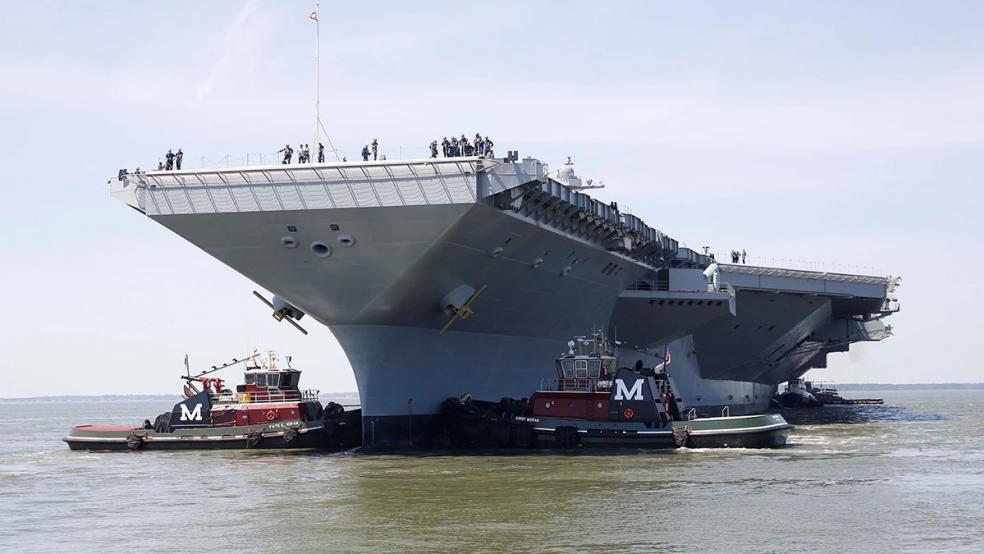The USS Gerald R. Ford steamed out of the Norfolk naval station to begin its acceptance trials with the U.S. Navy on Wednesday.
The first Ford-class supercarrier is billions over budget and more than a year overdue. Construction began in 2005, and the ship was supposed to join the fleet in 2016. The Navy hopes to commission the Ford sometime in 2017, but it won’t be ready for combat missions for several years after that.
The ship’s cost is currently pegged at $12.9 billion, but that doesn’t include more than $4 billion in research and development costs. The R&D costs will be spread over all the ships in the class, but any way you cut, the Ford is an expensive piece of hardware – and the most expensive warship ever built.
Related: 3 Attack Planes the Air Force Will Test to Replace the A-10
The acceptance trials demonstrate the ship’s functionality to the Navy's Board of Inspection and Survey (INSURV). The Navy says that over the next several days, sailors “will operate many of the ship's key systems and technologies, overseen by INSURV and the Navy's Supervisor of Shipbuilding, Conversion and Repair and accompanied by shipbuilders from Huntington Ingalls Industries-Newport News Shipbuilding.”
The new warship is technically still the future USS Gerald R. Ford (CVN 78) since the ship has yet to be placed into active service. Internally, the Navy refers to it as PCU Gerald Ford, for “pre-commissioned unit.”
The Ford-class carriers will eventually replace the 10 Nimitz-class ships that were built between 1975 and 2009. The new warships are slightly longer and have loads of new technology, including stealth design, next-generation launch and arresting systems, and a more powerful nuclear propulsion system.
Related: The Marines New Helicopter Costs as Much as an F-35
The technology used to launch planes was recently in the news after President Trump complained about it. The Ford uses an electromagnetic catapult to launch aircraft in place of the older steam catapult system. Trump said he heard bad things about it from unnamed sources in the Navy. He then said:
“It sounded bad to me. Digital. They have digital. What is digital? And it’s very complicated; you have to be Albert Einstein to figure it out. And I said – and now they want to buy more aircraft carriers. I said what system are you going to be – ’Sir, we’re staying with digital.’ I said no you’re not. You going to goddamned steam, the digital costs hundreds of millions of dollars more money and it’s no good.”
The comments left most observers scratching their heads, and there’s been no further discussion about making changes to the launch system in the USS Ford or any its classmates. Such changes would likely costs hundreds of millions of dollars, and delay the ship-building program even more.




